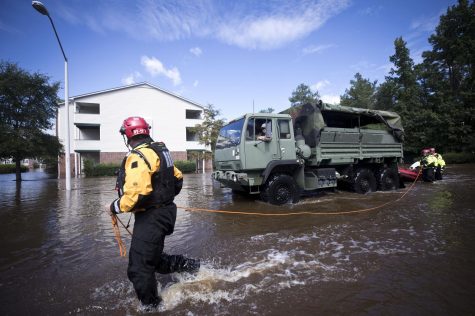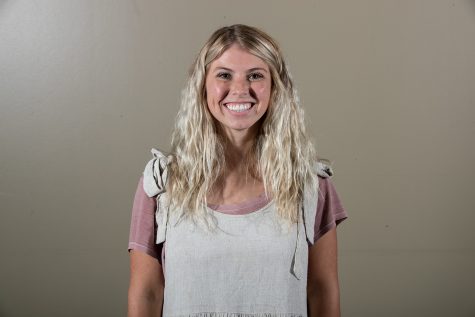Newby: Suicide prevention comes from regular people
The conversation about suicide prevention is less about saying the right things and more about being there for people.
September 19, 2018
Each year, there are nearly 45,000 American deaths by suicide — and for each death there are an estimated 25 attempts. While these statistics are astounding and absolutely devastating, the stories of those who survived are even more gripping.
“It’s an intentional thing,” said Dese’ Rae L. Stage, photographer and storyteller, in reflecting on the numbers and on surviving her own attempted suicide. “It’s an intentional thing to get up and keep living.”
With September as our nation’s Suicide Awareness Month, we’re giving more room to a conversation that deserves uninterrupted attention to begin with.
When Stage began to pursue making a difference in the conversation of suicide from an academic standpoint, she found only dead ends. The conversation around suicide at the time was approached from a distance or one that wasn’t approached at all.
And even today, the topic of suicide feels as if it is either confined to a classroom or limited to one month out of the year. It seems to be a discussion people hide from, and it isn’t fair.
Stage discovered that the only way she could actively participate in the conversation was through the ways she felt most equipped — in the ways she felt mattered most — was not by pursuing a Ph.D. in the subject, but rather by telling her story and then listening to those with similar experiences.
“There were no stories of people like me. I was just seeing statistics, and that’s not humanity,” she said as we discussed the purpose behind her photography and storytelling. “We’re putting faces and names on stories. This is the stuff we should be proud of getting through.”
RELATED: After Miss America, Miss Iowa looks forward to a year of service to the state
Stage provides people a space in which to talk through their testimonies and see through their stories, which allows people to open up about what happens after a suicide attempt. There is immeasurable power in that.
“No one was telling these stories of what happens after a suicide attempt — hospital bills, long-term damage to your body, relationships with the people around you that might have been damaged … we just don’t talk about that stuff,” Stage said.
And when the question of what comes after a suicide attempt arises, it’s less about what we can say and more about what we can do.
The main thing we can do for people who have survived suicide, or are even heavily contemplating it, is to just be with them. We can’t let our fear of saying the wrong thing keep us from being with the people who need us the most.
“Regular people have the most power when it comes to preventing suicide,” Stage said.
RELATED: Wooden: I hope God hears me cry
And so, as a community, this is less about a conversation and more about a commitment of being there and being present.
Sometimes, people want to talk through the grief that grips them, and other times, people just want help washing their dishes and doing their laundry.
Showing up for people doesn’t have to be big and obvious; it can look more like preparing dinner. It’s more about friendship than finding the “right” things to say. It’s OK to hurt, and it’s OK to hear out each other’s pain.
The point is, we can see the story through together.
See Stage share more about what she does at the Coralville Center for Performing Arts at 7 p.m. today. And if you need someone to talk to, or just someone who will listen to you, don’t hesitate to call the Johnson County Crisis Line at 1-855-325-4296.





















